With its golden crunch, delicate whisps of crispy onions, and a symphony of spices, it’s easy to see how Onion Bhaji became one of the Indian Chaat dishes that became massively popular worldwide. It is naturally gluten-free and vegan, and makes the perfect, mildly spicy, snack or appetizer.

The art of deep-frying vegetables in a spiced gram flour batter, known as "besan," has long been practiced in Indian culinary traditions. It was during the British colonial period, when Indian flavors began to merge with British preferences, that the irresistible Onion Bhaji as we know it today was born. Influenced by the British concept of fritters, Indian cooks ingeniously incorporated onions, spices, and regional herbs into the batter, creating a harmonious fusion that delighted all who tasted it.
In India, sharing food is considered an expression of love and hospitality, and Onion Bhaji often takes center stage along with chaats such as aloo papri chaat, vadai, shakarkandi chaat, and Masala Phool Makhana as a cherished offering during festive celebrations, family gatherings, and street food feasts. Its distinct aroma wafting through the air, accompanied by the sizzle of frying batter in hot oil, brings people together, fostering a sense of community and togetherness.
Get ready to blow your guests away with homemade onion bhajis. They bring the most delicious Indian street-food tradition into your kitchen.
Jump to:
🧅What are Kanda Bhaji?
Because there are over 14 spoken dialects throughout India, Onion Bhaji goes by many names, such as Pyaaz Pakora, Kanda Bhaji, Bhajji, Onion Pakora, or Pakoda. It is a popular Indian chaat (appetizer/snack) renowned for its crispy texture, distinct onion flavor, and wonderful fragrance.
It is a deep-fried fritter made from a batter of chickpea flour (AKA gram flour or besan), a tiny bit of water, and a blend of spices. In the most flavorful bhaji recipes (uh, like this one 😉), the juices of the onion provide most of the moisture for the batter providing a savory sweetness to the dish.
It is often served as a street food snack, at tea stalls, and as a part of festive celebrations and gatherings. Onion Bhaji is a versatile dish with regional variations that reflect the diverse culinary traditions of India.

In North India, particularly in the states of Punjab and Rajasthan, Onion Bhaji is known as Pyaaz Ke Pakora. The batter in this region is typically spiced with a combination of ground coriander, cumin, chili powder, and turmeric, resulting in a flavorful and mildly spicy fritter.
In South India, especially in the state of Tamil Nadu, the dish is referred to as Vengaya Bajji. The batter here may include curry leaves, rice flour, and besan, giving it a lighter and crispier texture. It is often served with coconut chutney or spicy sambar.
Other regional variations of Onion Bhaji include the Maharashtrian Kanda Bhaji, where the batter is seasoned with ajwain (carom seeds - the same seeds that are commonly used in Samosa dough) and served with tamarind chutney, and the Bengali Pyazi, where the fritters are made with a batter of besan and rice flour, spiced with panch phoron (a blend of five spices).
Regardless of the regional variation, Onion Bhaji is cherished for its simplicity, affordability, and delightful taste. It is a crowd-pleasing snack that pairs well with various chutneys, sauces, and hot beverages like masala chai.
🥰Why you are going to adore the ever-loving heck outta this recipe
Let me enumerate the freaking ways…
⏩Quick and Easy Preparation: Whether you're craving a snack or planning to entertain guests, Onion Bhaji is a fantastic choice because it's quick and easy to prepare. With simple ingredients and straightforward steps, you can whip up a batch quickly. They can even be made in an air fryer if you are not into frying them on the stovetop.
🌱Vegan: Like all of my vegan Indian Recipes, you can enjoy this crispy and flavorful appetizer guilt-free, knowing that it does not cause harm to animals. It’s the 21st century. Let’s end factory farming, and stop being one of the only species on the planet that consumes the flesh, the milk or eggs of another creature! It’s weird, unethical, and generally a violation of the principles of ahimsa अहिंसा (nonviolence), brahmacharya ब्रह्मचर्य (let’s just call it sexual purity, otherwise I will have to write ten pages about it), and asteya अस्तेय (non-stealing). Animal products are not ours to steal. There is violence involved in the modern agricultural system for generating dairy, and dairy cows are forcibly impregnated (raped) to keep them in a state of constant milk production.
🙅♀️🌾Gluten-Free: Besan, derived from chickpeas, is used as the base for the batter, making it one of my naturally gluten-free vegan recipes, and also higher in protein. Since you hate gluten with all your heart (if you don’t check out my wheat meat recipe), you can indulge in perfect Onion Bhaji without worrying about any gluten-related concerns!
🧅Notable ingredients in this recipe

Chickpea flour
Also known as besan, or gram flour in Indian cuisine, chickpea flour is a versatile ingredient packed with nutritional benefits. It is a good source of plant-based protein, dietary fiber, iron, and magnesium. As a substitution, you can use regular all-purpose flour, but it's not going to have the same flavor, and will not be gluten-free.
Onions
Known in India as kanda or pyaaz, onions add flavor to dishes and also provide health benefits. You can use either red onions, yellow onions, or shallots for this recipe. They are rich in antioxidants, vitamins C and B6, and dietary fiber. If you follow a sattvic diet, or intend to offer these pakoras as bhoga, you should substitute a different vegetable such as cauliflower (gobi), shredded zucchini, or thinly sliced mild capsicum (pepper) in place of the onion.
White rice flour
Known as chawal ka atta, it is a gluten-free flour made from finely ground white rice. It helps the bhaji fry up crispy and prevents them from sticking together while frying. As a substitution, you can use other gluten-free flour like cassava flour, cornstarch, or potato starch.
Asafetida
Asafetida, aka asafoetida, or hing, is a pungent spice known for its digestive properties. It is used in small quantities to add a unique onion/garlic-like umami flavor to dishes. As a substitution, you can use garlic powder or onion powder, although they won't replicate the exact taste of asafetida. I highly recommend powdered asafoetida for this recipe, rather than the difficult-to-measure resin block form.
Kashmiri red chili powder
Known for its vibrant color and moderate heat, red chili powder from Kashmir is commonly used in Indian cuisine. As a substitution, you can use a combination of paprika and cayenne pepper, adjusting the amounts based on your preferred spice level.
📖 How to park perfect onion bhajis
Check out these clear photos which show every step needed for making this cripsy side dish. Or you can follow along with the easy-to-print recipe card towards the bottom of this page.

Step 1
Place the chickpea flour, rice flour, green chilli, cumin seeds, Kashmiri chili powder, grated ginger, chopped cilantro (fresh coriander leaves), salt, and asafoetida into a large bowl.
Some people like to also add a little fennel seeds or use ground cumin in place of the cumin seeds. It's fine to adjust the seasonings here to suit your taste.

Step 2
Whisk the ingredients together to ensure they are well combined.

Step 3
Add the thinly sliced onions to the bowl.

Step 4
Squeeze the onions by hand as you mix them with the other ingredients. This will help their moisture create a thick batter around them.

Step 5
Pour in the water and mix by hand, ensuring that the water loosens the dough and evenly coats all the onions. It should not feel like a loose batter.

Step 6
Heat oil in a pot on the stove over high heat, bringing it to 350-365 degrees Fahrenheit (176-185 degrees Celsius). Alternatively, lightly spray the tray with cooking oil if using an air fryer.
Take approximately 2-3 tablespoons of the onion mixture and shape it into rough fritters. Avoid compressing or smoothing the outsides, as the irregular shape and stray bits of onion contribute to the crispy texture.

Step 7
Once while they are cooking, give the bhaji a stir, to make sure they aren't sticking together.
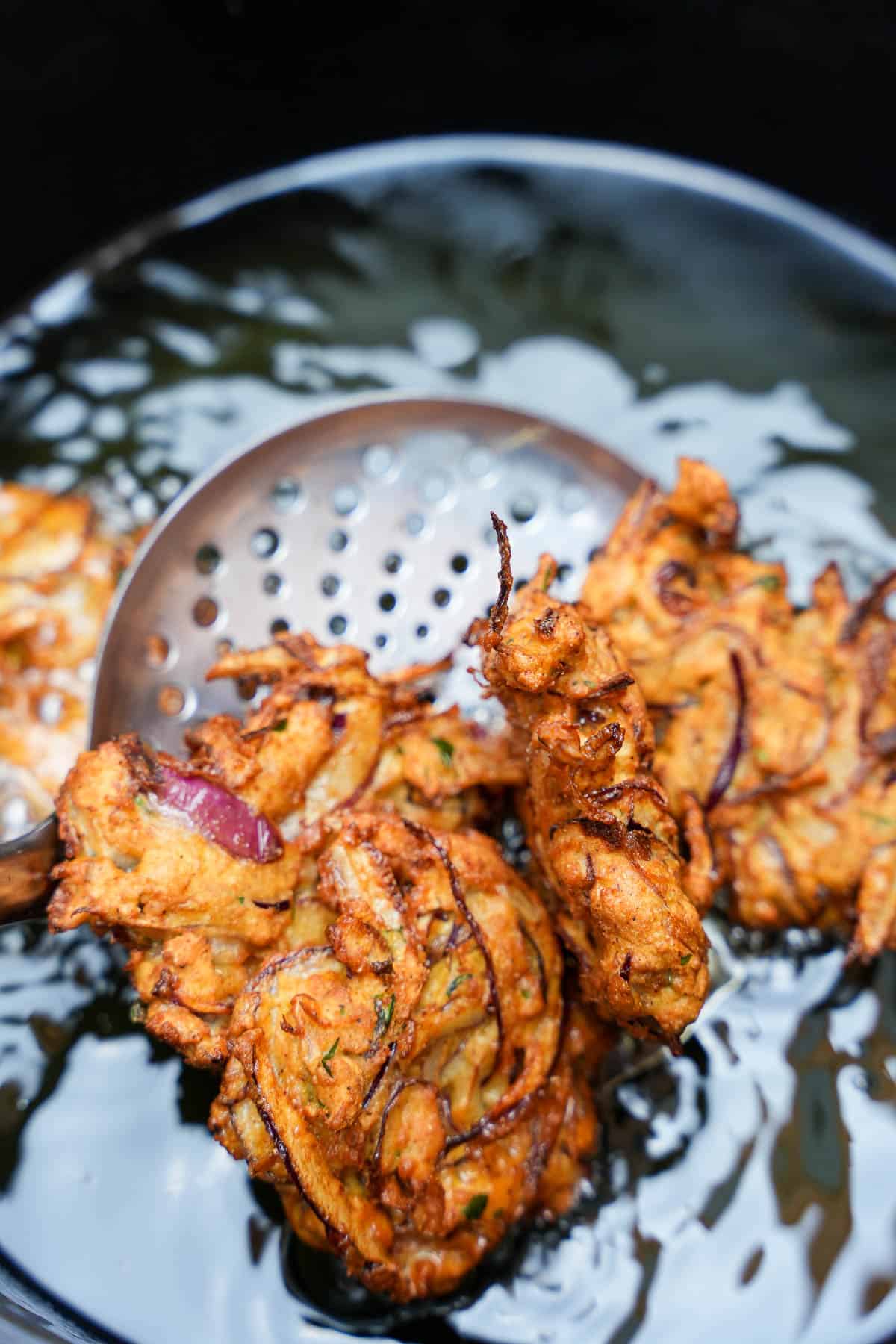
Step 8
Fry the fritters in batches, making sure not to overcrowd the pot or air fryer. Use a spider or slotted spoon to stir and flip the bhajis as they cook. Fry for 2-3 minutes until they turn crispy and golden brown. Be cautious not to fry them too lightly (as they may be undercooked) or too dark (as they may taste burnt).

Step 9
Place the fried bhajis on paper towels to absorb any excess grease.

Serve the Onion Bhaji with mango chutney, tamarind chutney, mango pickle, carrot pickle, or cilantro mint sauce, and garnish with fresh mint and cilantro leaves, and a squeeze of lemon juice if desired.
🍽️Serving Ideas
While they are great on their own, or with some green chutney, Onion Bhaji can be a delicious side as part of a complete vegetarian feast!
Serve it as a starter or side to a comforting bowl of vegetable biryani topped with dry bhindi (Punjabi-style okra), or with a hot ladle full of chana dal, masoor dal, or Toor Dal Tadka, a traditional Indian lentil curry infused with aromatic spices. The creamy and flavorful dal provides a perfect contrast to the crispy texture of the bhajis.
For a nice South Indian touch, serve the Onion Bhaji alongside veggie-loaded aviyal, olan, lauki sabji, or Peerkangai Kootu, a nutritious ridge gourd and lentil stew cooked in a coconut-based gravy.
My recipes for Vegan Butter Chicken (made from homemade seitan chicken), kala chana, aloo palak, and Punjabi chole are also great accompaniments for these onion fritters.
🌶️ Pickles: Complete your meal with the delightful tanginess of Indian pickles. Hari Mirch pickles and amla pickle will both add a nice punch.
🤷♀️FAQ
Bhaji and Pakoras are similar in that they both consist of sliced vegetables coated in a spiced batter and deep-fried until crispy. While the terms are often used synonymously, the names bhaji and pakora can vary in usage based on regional preferences and culinary traditions.
In some regions, particularly in South India, the term bhaji commonly used to refer to fritters made with a batter primarily composed of besan (chickpea flour) and spices. Onion Bhaji falls into this category, where thinly sliced onions are mixed with the besan batter and fried until golden and crispy.
On the other hand, pakora is a more widely used term in Indian cuisine and can encompass a broader range of fritters. Pakoras can be made with various ingredients, such as onions, potatoes, vegetables, or even paneer (Indian cheese), or “bread cutlet” which is a deep-fried slice of batter-coated bread (no, this is not very healthy…). The pakora batter, which is often looser than what is used for bhaji may include a combination of chickpea flour, rice flour, or other flours along with spices.
350°F or 177°C. is the perfect temperature to cook bhaji at! Any higher and the inside might still be uncooked, any lower and they will absorb too much oil. If you don't use a deep fryer, I recommend checking the oil temperature using a frying thermometer.
✌️My favey dishes to serve with Onion Bhaji:
Say Hi on Social! 👋
Follow me on Instagram & Facebook for more recipes.
❤️Love this recipe? It helps me out greatly if you leave a 5-star 🌟🌟🌟🌟🌟rating in the recipe card below and maybe even leave me a lovey-dovey comment too!

Easy Kanda Bhaji (gluten-free and vegan onion bhaji recipe)
Ingredients
Bhaji:
- 1 ⅓ cup chickpea flour aka Gram flour, or Besan
- 2 tablespoons white rice flour
- 2 minced green chili peppers or to taste
- ½ teaspoon cumin powder jeera
- 1 teaspoon Kashmiri red chili powder
- ¼ teaspoon turmeric powder
- 1 teaspoon grated fresh ginger
- 2 tablespoons minced fresh cilantro leaves
- ¾ teaspoon salt
- ½ teaspoon asafetida Hing
- 2 ½ cups 280 grams thinly sliced onion
- Up to 3 tablespoons water
For frying:
- 2 cups Canola oil, vegetable oil, or sunflower oil
For serving:
- Mint sauce
- Tamarind sauce or chutney
- Fresh cilantro leaves to garnish
Instructions
- Place the chickpea flour, rice flour, green chilies, cumin powder, Kashmiri chili powder, turmeric powder, grated fresh ginger, fresh cilantro leaves, salt, and asafoetida powder into a mixing bowl.
- Whisk them together.
- Add the very thinly sliced onions and squeeze them by hand as you mix them with the other ingredients so that their moisture creates a thick dough around the sliced onions.
- Add the water and mix by hand, so the water loosens the dough to coat all the onions.
- Heat oil in a pot on the stove over high heat to 350-365 degrees Fahrenheit (176-185 centigrade), or prepare your air fryer, by lightly spraying the tray with cooking oil.
- Form the onion mixture into roughly shaped 2-3 tablespoon-size fritters. Do not compress them or smooth the outsides, as the rough form, and stray bits of onion help the bhaji to be crispy.
- Fry or air-fry in batches, ensuring not to overcrowd your pot or air fryer. Use a spider or slotted spoon to stir and flip the bhaji over as they cook once or twice. Fry for 2-3 minutes until crispy and golden brown. Too light in appearance, and they will probably not be cooked internally, and too dark and they will have a burnt taste.
- Place the fried bhaji on paper towels to absorb any excess oil.
- Serve with chutney, tamarind, or mint sauce and garnish with fresh mint and cilantro leaves if desired.
Notes
- Adjust the spiciness according to your preference by increasing or decreasing the amount of green chilies and Kashmiri chili powder.
- If you want MORE flavor, consider adding a sprinkle of ajwain seeds or curry leaves to the mixture before you add the onions.
- For a healthier alternative, consider air frying the bhajis instead of deep-frying them. Coat the air fryer tray with cooking oil spray before placing the fritters on the tray.
- Always fry the bhajis in small batches to maintain consistent heat and ensure they cook evenly, without sticking together.
- Keep an eye on the frying process, as cooking times may vary. Adjust the cooking time to achieve the desired level of crispiness and color.
- Serve the bhajis immediately after frying for the best texture.
- VERY thinly slicing the onions is the key to the crispy onion bhajis and allows the most moisture from the onions to sweeten and flavor the batter.

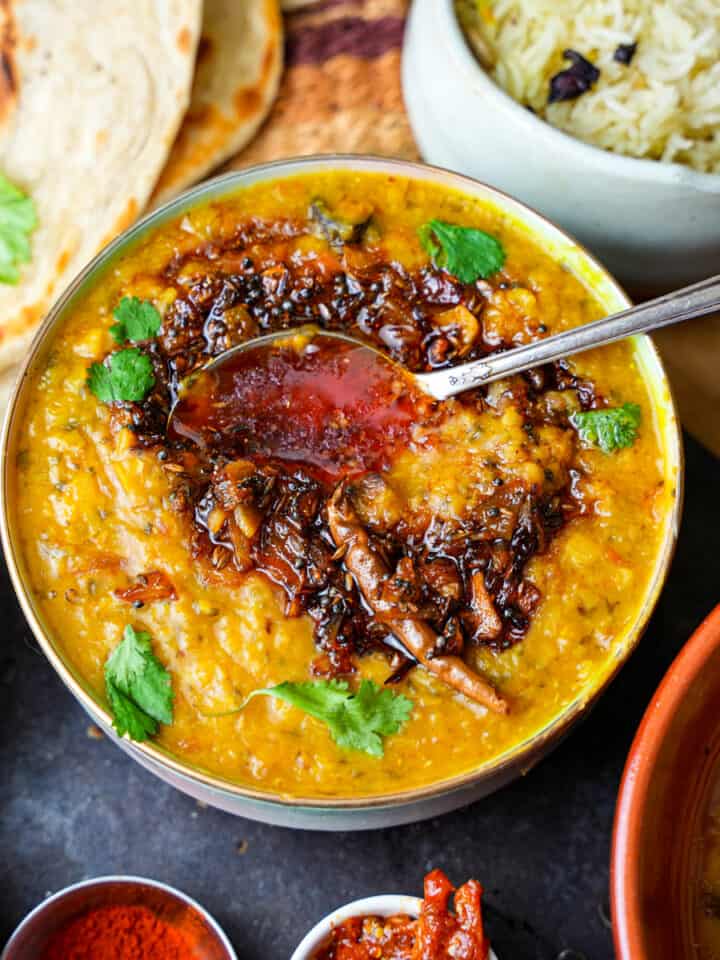
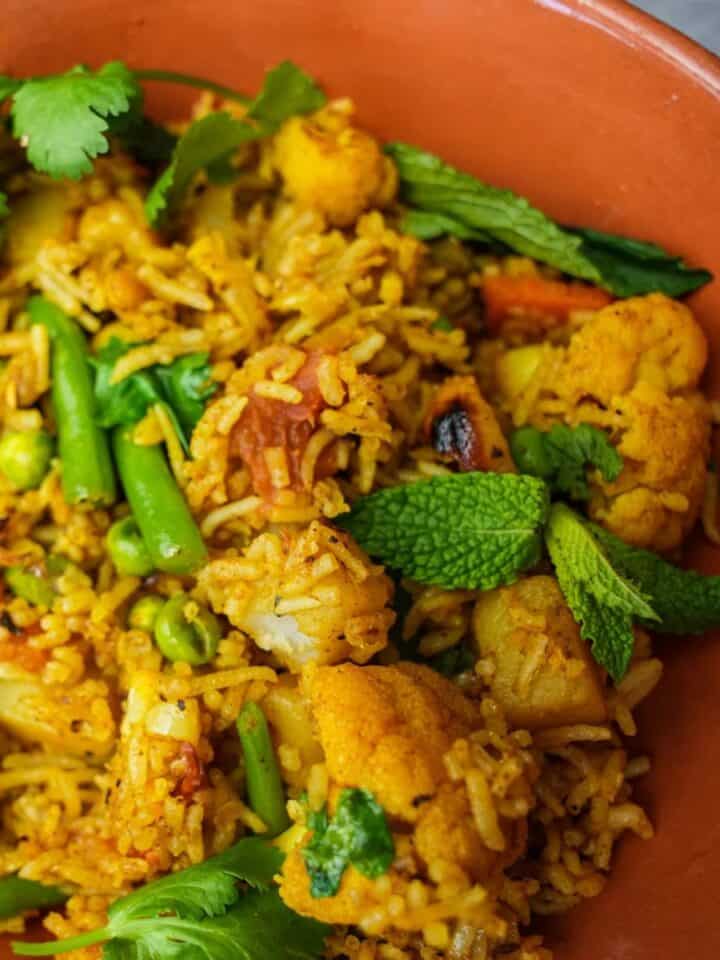
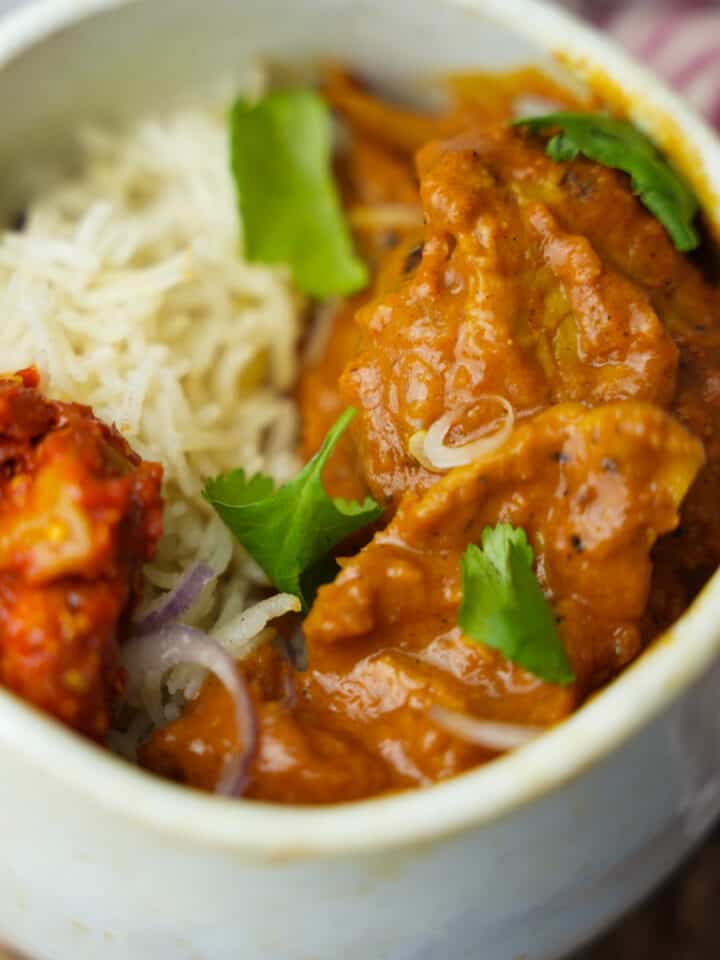
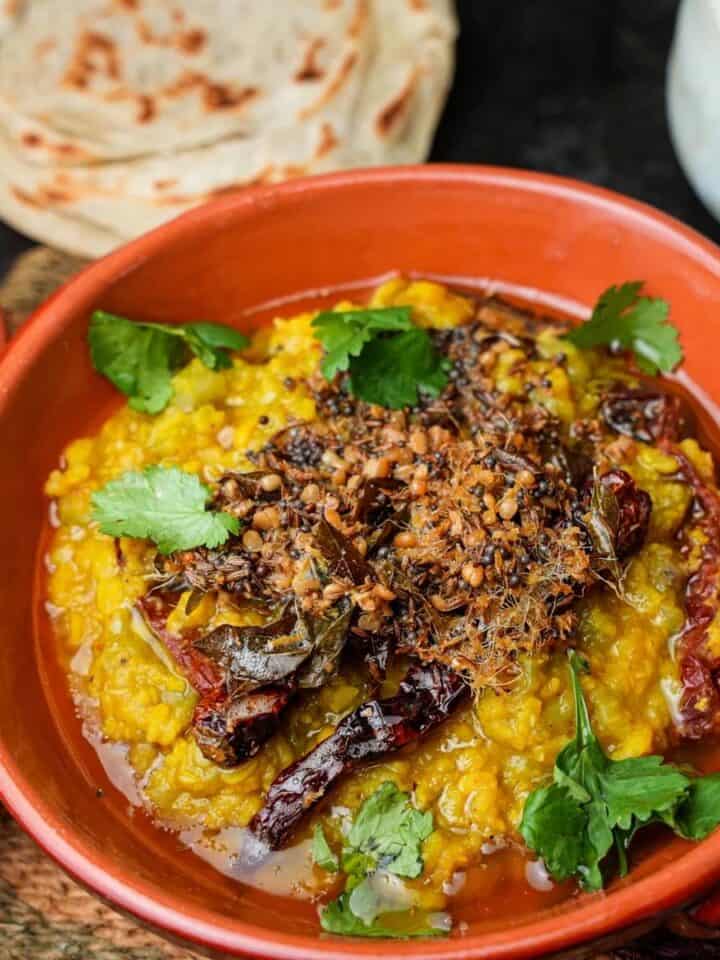
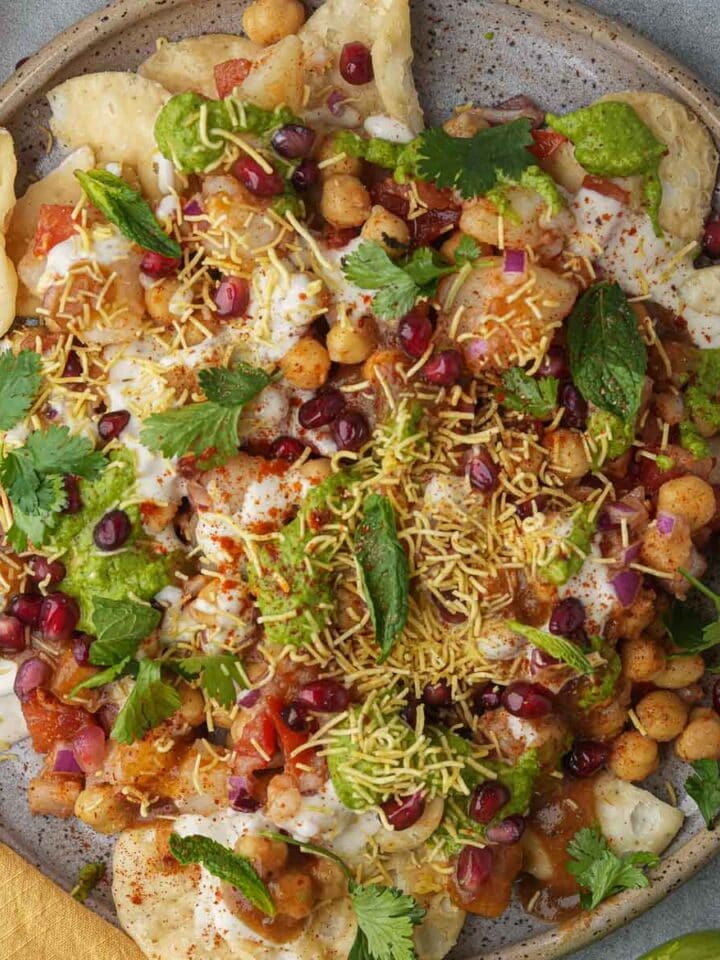
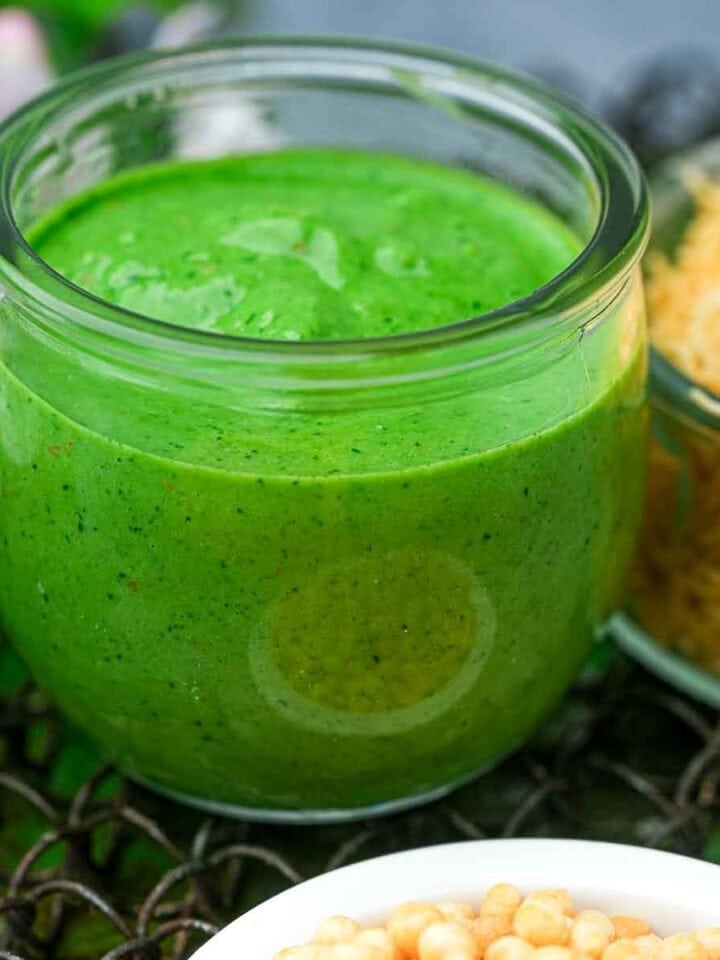
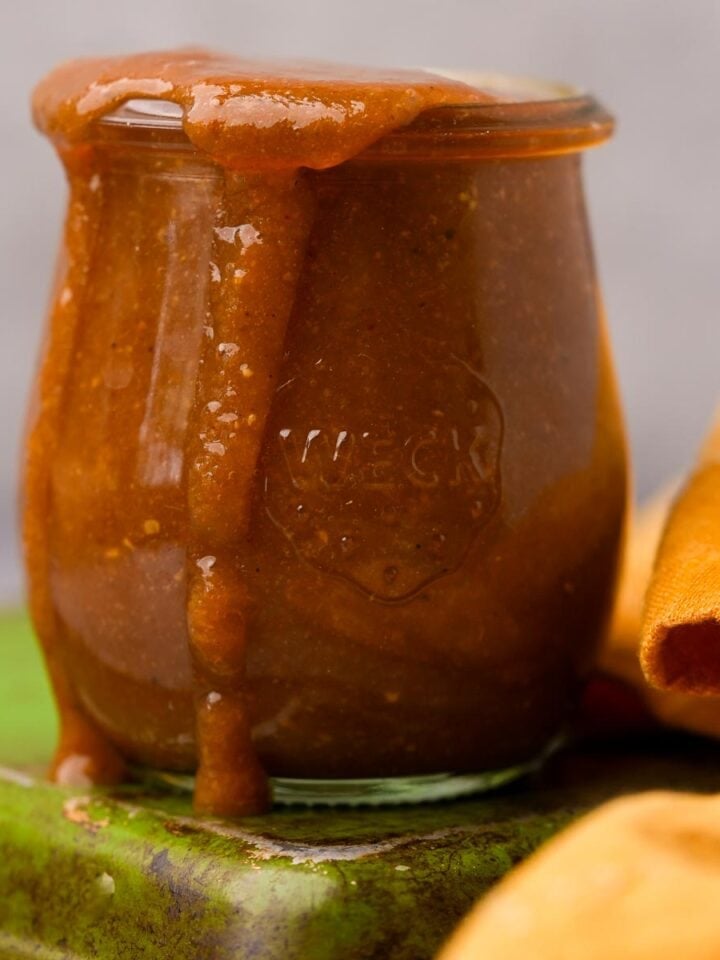
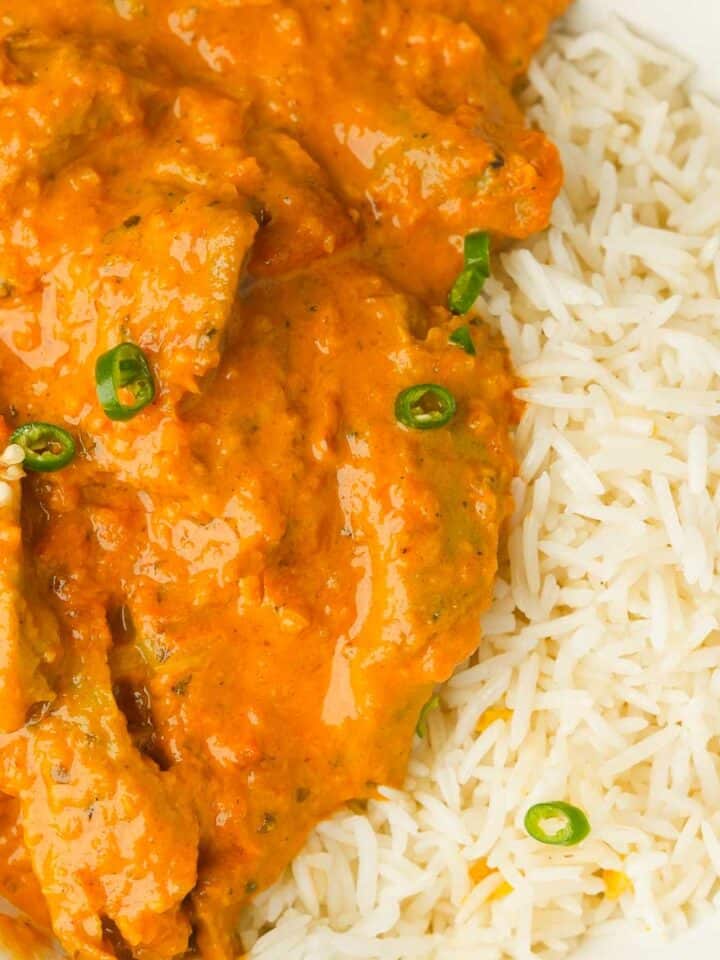

Leave a Reply